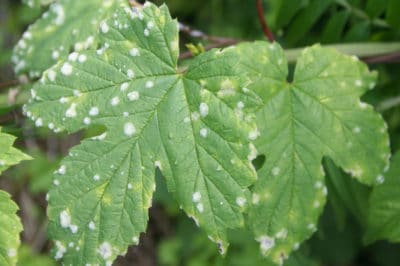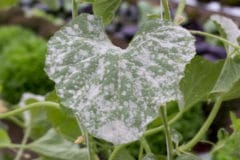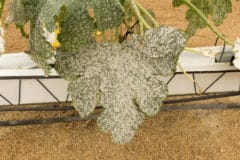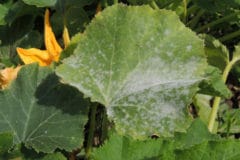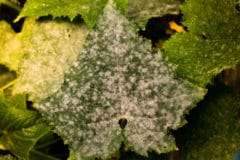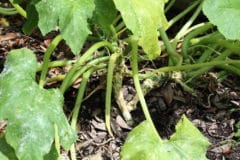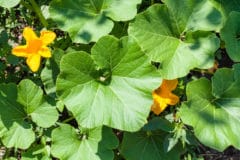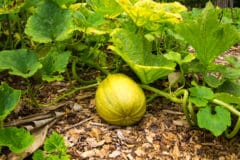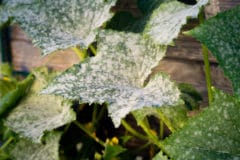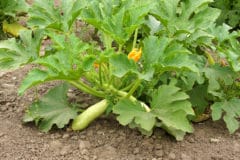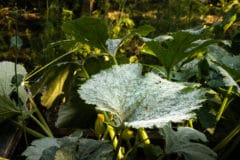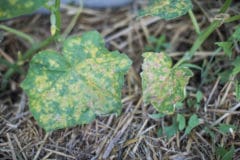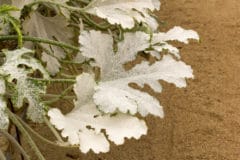Identifying Powdery Mildew
Powdery mildew, a fungus, appears like a dusting of flour on squash plant leaves. The production of spores causes this white or gray appearance. Powdery mildew can also be present on plant stems, flowers, and fruit. The white or gray appearance can also become yellow and then brown as the fungus advances.
Minimize Chances of Having Powdery Mildew
High humidity, low light, dry foliage, and moderate temperatures encourage fungal growth. Here are some preventative steps to take to prevent powdery mildew:
- Water squash plants early in the day.
- Space squash plants three feet apart.
- Plant only in areas that have six or more hours of sunlight per day.
- Plant powdery mildew resistant varieties of squash.
- Disinfect with vinegar all tools used on infected plants.
- Remove infected leaves and discard.
- Do not compost infected leaves.
Eliminating an Existing Problem
There is a possibility that powdery mildew can be eliminated totally from your squash plants. Commercial fungicides and homemade remedies can be effective at killing this fungus. Here are some of the possible solutions:
Neem Oil
Neem oil is a 100% natural oil derived from the fruit and seeds of the Azadirachta Indica evergreen trees of South Asia and India. When sprayed on squash leaves, it forms a waterproof barrier that prevents powdery mildew from forming. Neem oil needs to be reapplied every one to two weeks.
Baking Soda
A baking soda mixture is another effective home-made organic solution for powdery mildew. Early in the fungal outbreak, mix one tablespoon of baking soda, one teaspoon of vegetable oil (olive, sunflower, etc.), and one teaspoon of insecticidal or liquid soap (not detergent) to a gallon (3.785 liters) of water. Spray on plants every one to two weeks.
Potassium Bicarbonate
Similar to baking soda, potassium bicarbonate can quickly and effectively kill powdery mildew on contact. This crystalline salt is a fungicide approved for organic gardening. Potassium bicarbonate has been found to be 25 to 35 percent more effective than baking soda.
A homemade mixture of one tablespoon of potassium bicarbonate, 1/2 teaspoon of liquid soap, one tablespoon of vegetable oil, and one gallon (3.785 liters) of water can effectively cure powdery mildew if applied in early stages of the disease. For those gardeners that prefer buying a commercial product, there is a patented fungicide formula of potassium bicarbonate called GreenCure.
